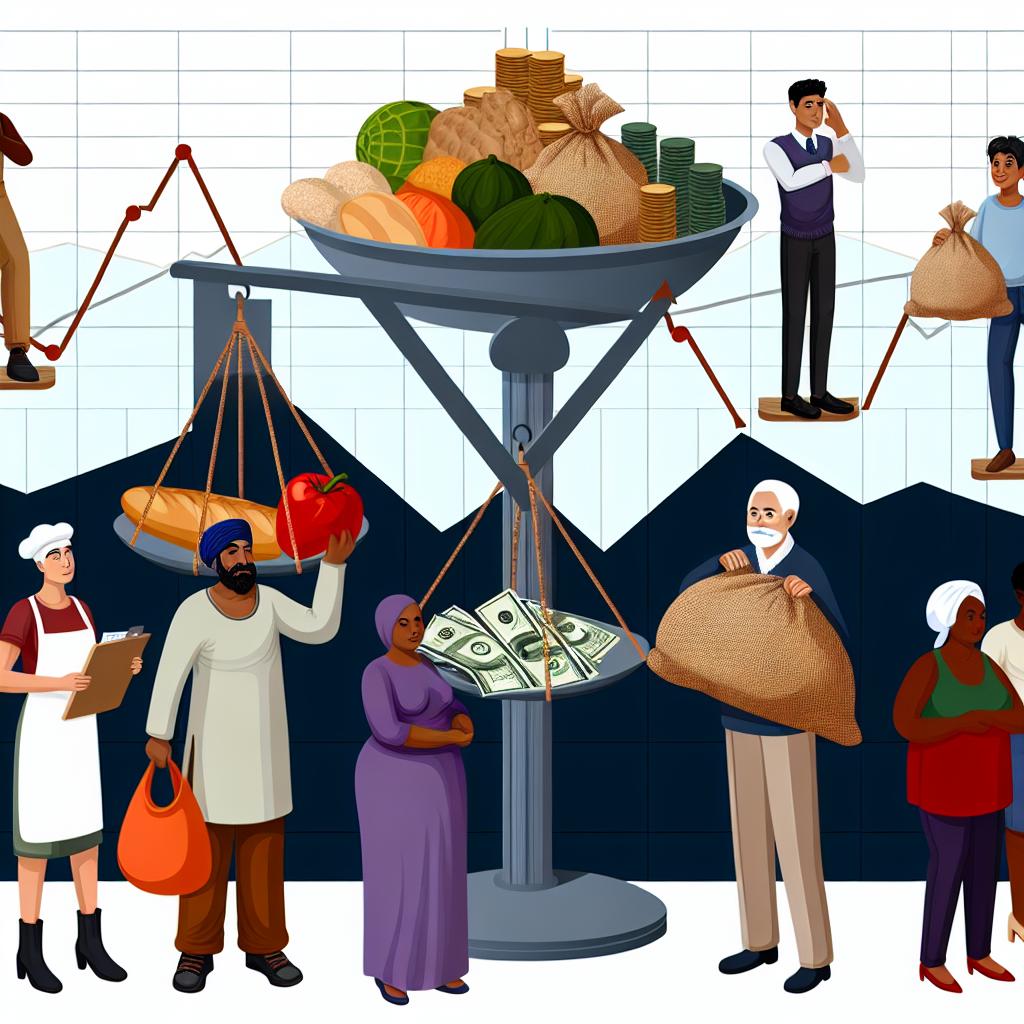The Concept of Supply and Demand in Economics
- Written by: admin
- Category: Uncategorized
- Published: April 13, 2025

Understanding Supply and Demand
The concept of supply and demand is a foundational principle within the field of economics. It illustrates the intricate relationship between the availability of a product or service and the level of desire for that product or service among consumers. Grasping this relationship is crucial for analyzing market dynamics and for anticipating changes in market conditions.
The Law of Demand
The law of demand articulates that, when all other factors remain constant, there exists an inverse relationship between the price of a good or service and the quantity that consumers are willing to purchase. In simpler terms, as the price of an item decreases, the quantity demanded by consumers tends to increase. Conversely, as the price increases, the quantity demanded decreases. This phenomenon is typically depicted through a downward-sloping curve on a graph, known as the demand curve.
Determinants of Demand
Demand for products or services is not solely dictated by price. Several factors can significantly influence consumer demand:
Consumer Income: Generally, an increase in consumer income leads to an uptick in demand for goods and services. This is particularly true for normal goods, which are those products for which demand rises as consumer income rises.
Tastes and Preferences: Consumer preferences can shift due to cultural influences, trends, or personal tastes. Such shifts in preferences can lead to changes in the demand for particular products.
Prices of Related Goods: The demand for a product can also be affected by the prices of related goods. These related goods may be substitutes, where an increase in the price of one product leads to an increase in demand for another, or complements, where a decrease in the price of one product results in an increase in demand for another.
The Law of Supply
In contrast, the law of supply posits that there is a direct relationship between the price of a good or service and the quantity that producers are willing to offer for sale. As the price of a good increases, the quantity supplied generally increases. Conversely, as prices drop, the willingness to supply typically lessens. This is depicted graphically through an upward-sloping supply curve.
Determinants of Supply
The supply of products or services is influenced by various factors beyond just the price:
Production Costs: An increase in production costs, such as raw materials or labor, often results in a decrease in supply, as the product becomes less profitable to produce at previous levels. Conversely, a reduction in these costs can facilitate an increase in supply.
Technological Advances: Innovations and improvements in technology can lead to more efficient production processes, reducing costs and potentially increasing the supply of a product.
Number of Sellers: An increase in the number of sellers within a market typically leads to an increase in supply, as more producers vie to offer their goods and services to consumers.
Market Equilibrium
Market equilibrium is achieved when the quantity of a product or service demanded by consumers is precisely equal to the quantity supplied by producers. At this intersection, there is no economic incentive to alter the current price or quantity. It represents a state of balance within the marketplace. Any deviation from this equilibrium point can lead to conditions of either excess supply, where there is more supply than demand, or excess demand, where demand outstrips supply.
Shifts versus Movements
It is essential to differentiate between movements along a demand or supply curve and shifts in these curves. Movements along a curve result from changes in price, manifesting as a movement up or down along the existing curve. Shifts, on the other hand, denote modifications in the demand or supply curve itself. These shifts are precipitated by factors external to price changes, such as evolving consumer preferences or advancements in production technology.
The Importance of Understanding Supply and Demand
Understanding supply and demand holds significant implications for various stakeholders, including consumers, businesses, and policymakers. For consumers, comprehending these dynamics assists in recognizing and reacting to price changes, allowing for more informed purchasing decisions. For businesses, an understanding of supply and demand is essential for setting prices, managing inventory, and forecasting market trends. It also enables businesses to better strategize regarding product offerings and competitive positioning.
For policymakers, a firm grasp of supply and demand dynamics is crucial in designing and implementing policies that have broad economic implications, including those related to inflation, employment levels, and economic growth. By understanding these concepts, policymakers can better anticipate how potential changes in policy might impact the economy and adjust accordingly to promote stable economic conditions.
Learn more about the law of supply
Ultimately, the interaction between supply and demand functions as a cornerstone of economic theory. It provides invaluable insights into how prices are determined within markets and how resources are allocated efficiently. This understanding forms the basis for much of economic analysis and policy-making, guiding decisions that shape the economic landscape.
This article was last updated on: April 13, 2025

